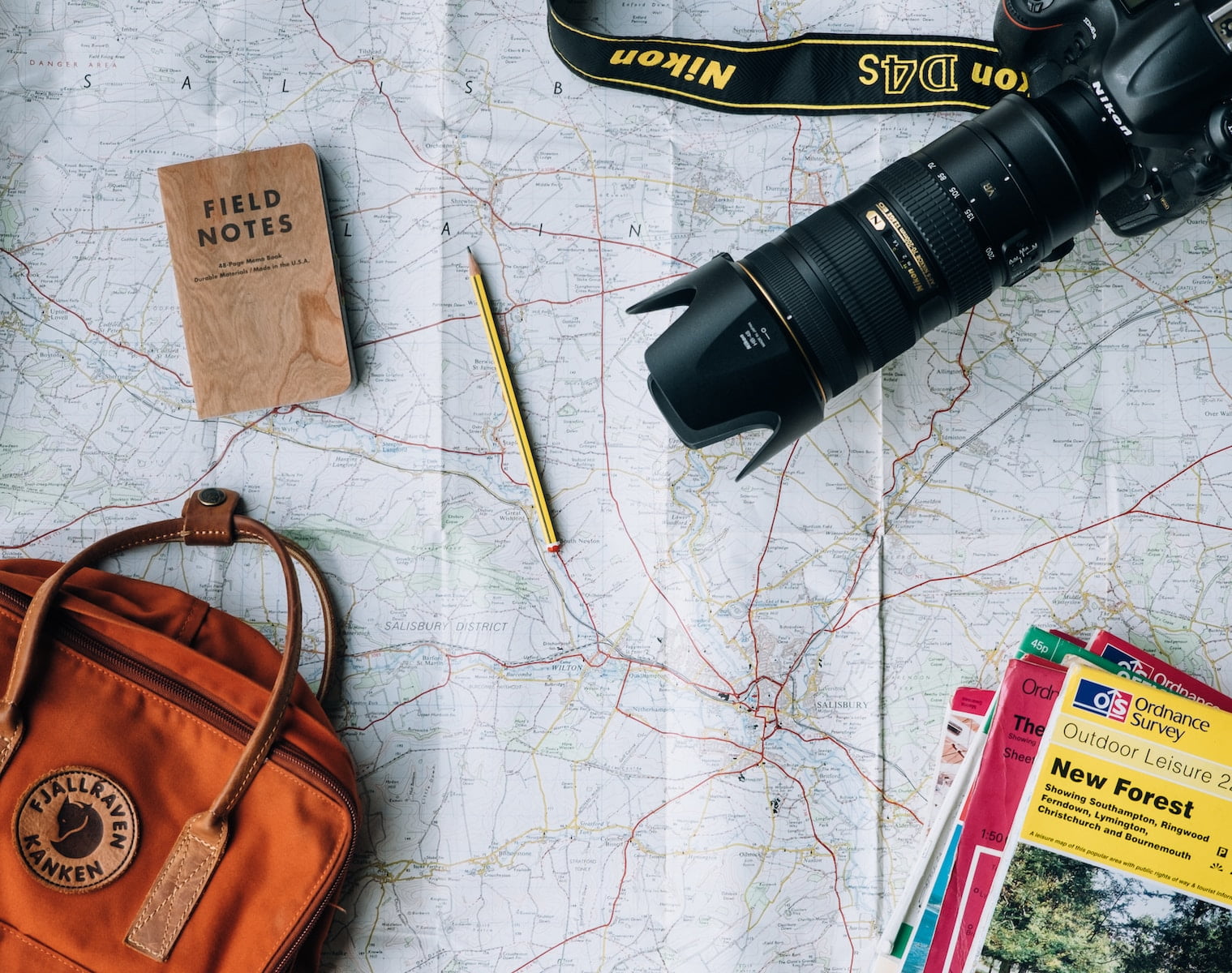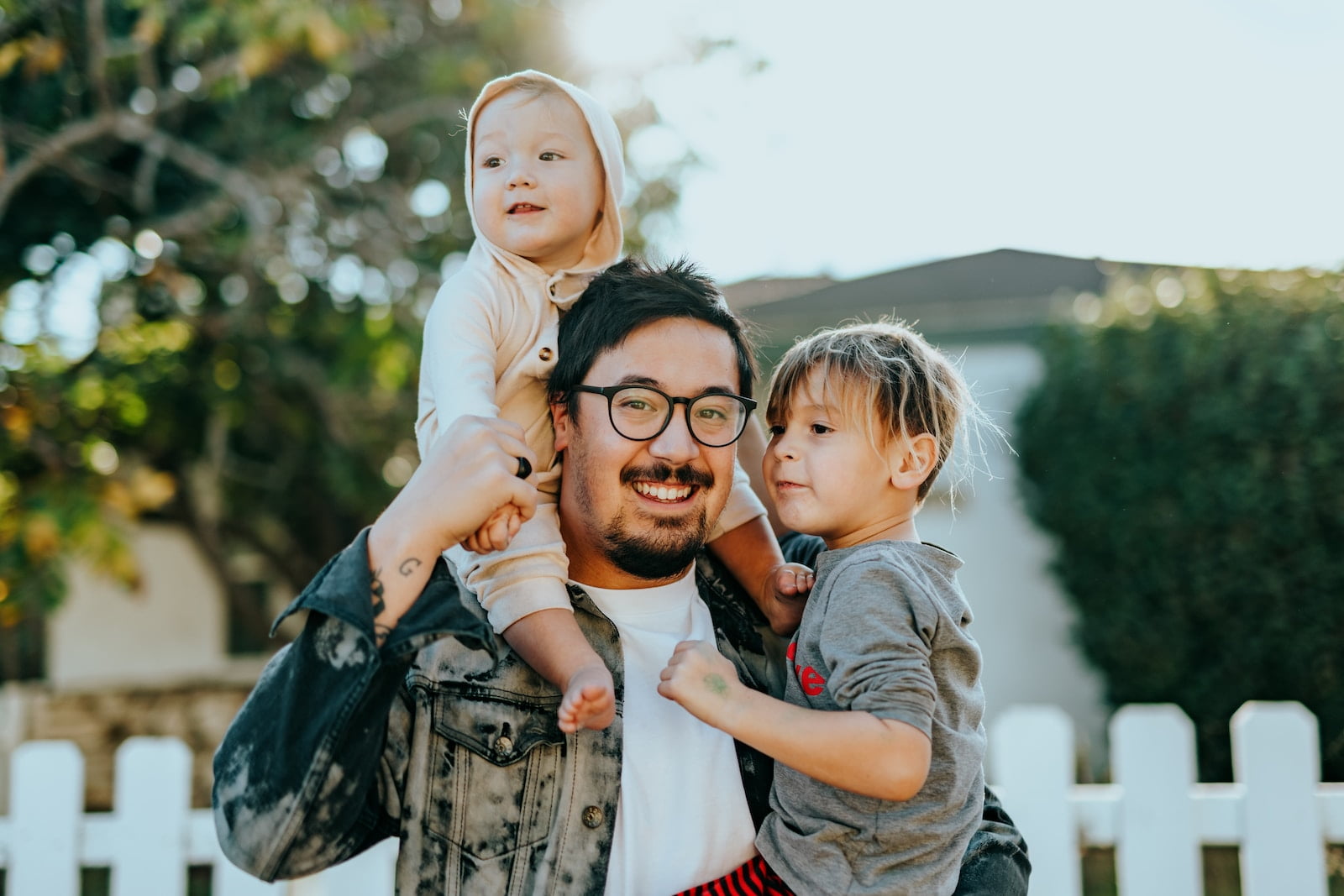The Exchange Visitor Visa, more commonly known as the J-1 Visa, offers a unique opportunity for individuals worldwide to participate in a variety of cultural exchange programs in the United States. From students and scholars to teachers and trainees, these visas are designed to foster mutual understanding between countries and build global connections. Before diving into the world of Exchange Visitor Visas, it is essential to understand the basics, including visa eligibility, various categories, and the application process.
Applying for an Exchange Visitor Visa is a multi-step endeavor that requires careful planning and preparation. Before setting out on your journey, make sure you fully comprehend the program requirements, visa issuance, and travel logistics. Additionally, it is important to be aware of the employment, training, and education opportunities available to you, as well as rules and regulations governing the visa program. This knowledge will be invaluable when navigating the complexities of the J-1 Visa and ensuring a successful cultural exchange experience.
Key Takeaways
- Understand the basics of Exchange Visitor Visas, including eligibility and categories.
- Be aware of the application process, visa issuance, and travel logistics.
- Familiarize yourself with the rules, regulations, and opportunities for employment, education, and cultural exchange.
Understanding Exchange Visitor Visas
J-1 Visa
The J-1 Visa is designed for individuals who are approved to participate in exchange visitor programs in the United States. As an aspiring participant, this visa allows you to take part in various educational and cultural activities to foster greater understanding between Americans and people from other countries. You can expect to be involved in roles such as teaching, instructing, studying, observing, conducting research, or receiving training.
Key points to remember about the J-1 Visa:
- It is a non-immigrant visa.
- The program promotes mutual understanding between the U.S. and other countries.
- Various categories are included, such as au pair, camp counselor, government visitor, intern, international visitor, physician, professor, and short-term scholar.
F-1 Visa
The F-1 Visa, while not an exchange visitor visa, is important for international students who wish to pursue academic studies or language training programs in the United States. To be eligible for this visa, you must be enrolled in a full-time academic course of study at an accredited educational institution.
Keep these points in mind about the F-1 Visa:
- It is a student visa.
- You must demonstrate sufficient financial resources to cover your tuition and living expenses.
- You are allowed to work on-campus during your studies and may apply for off-campus employment under specific circumstances.
Although the J-1 and F-1 Visas serve different purposes, both aim to enhance cultural exchange, education, and mutual understanding between the United States and other countries. The Department of State plays a crucial role in managing and overseeing the exchange programs, ensuring a positive experience for all participants.
Eligibility and Categories
As you consider applying for an Exchange Visitor Visa, it’s essential to know the different categories and their eligibility requirements. The J-1 visa covers several exchange visitor categories, each designed for specific purposes. In this section, we’ll explore the most common J-1 subcategories to help you better understand which one may be suitable for you.
Students
If you’re a student pursuing academic studies, research, or language training, you may be eligible for a J-1 visa under the Student category. You need to be enrolled in an accredited educational institution or be affiliated with a recognized sponsor organization that coordinates your exchange program.
Teachers
As a teacher, you could acquire a J-1 visa if you intend to come to the United States to teach full-time in a primary or secondary school. You must meet certain requirements, such as having a minimum of three years of experience in teaching or a related field.
Professors
If you’re a professor aiming to undertake research or teach at a higher education institution, you can apply for a J-1 visa under the Professor category. You must have appropriate qualifications and be sponsored by a recognized exchange program.
Scholars
The Short-term Scholar category is for highly skilled individuals in the field of research or academia who wish to come to the United States for short-duration projects, such as collaborations or guest lectures. Ensure your plans align with your host institution’s goals and your expertise.
Specialists
For professionals with unique skills, knowledge, or experience, the Specialist category facilitates cultural and professional exchange between the United States and other countries. Your capabilities must be in high demand, and you’ll be expected to consult or demonstrate those skills during your stay.
Au Pairs
As a foreign national interested in providing childcare services to an American host family while pursuing education, you can apply for a J-1 visa under the Au Pair category. You’ll need to comply with specific education requirements and work within regulated hours while living with your host family.
Camp Counselors
If you have an interest in working as a counselor in an American summer camp, the Camp Counselor category allows you to do so. You will engage in direct supervision of American youth while participating in their cultural activities and camp life.
Interns
The Intern category welcomes foreign nationals who wish to gain professional experience or develop their skills in the United States. As an intern, you must be enrolled in post-secondary education or have graduated within 12 months before beginning your internship.
Trainees
If you’re a professional seeking additional on-the-job training, you may be eligible for the Trainee category. This allows you to develop practical skills in an American organization. To qualify, you should have a degree or professional certification and at least one year of work experience.
Remember, various eligibility criteria apply to each subcategory, so make sure to review the specific requirements before pursuing an Exchange Visitor Visa. Good luck!
Application Process
Form DS-160
To apply for an Exchange Visitor Visa, you must start by completing the Online Nonimmigrant Visa Application, Form DS-160. This form will require you to provide personal information, details about your proposed visit, and a digital photo. Ensure that you review the information thoroughly before submitting, as errors can lead to delays or even denial. After completing the form, remember to print the confirmation page, as you will need it for your visa interview.
Form DS-2019
Next, you will receive a Form DS-2019, Certificate of Eligibility, from your designated sponsor. This form serves as proof that you have been accepted into an approved exchange visitor program. You will need this crucial document to book your visa interview and to demonstrate your intended activities during your stay in the United States.
SEVIS Fee
Before continuing with the application process, you need to pay the SEVIS (Student and Exchange Visitor Information System) fee. This nonrefundable fee goes towards the operational costs of the SEVIS program and will not be refunded if your visa application is denied. It is crucial to keep a copy of the SEVIS fee payment receipt, as you will need to present it during your visa interview.
Visa Interview
After completing the necessary forms and paying the relevant fees, it’s time for your visa interview. Schedule an appointment at your nearest U.S. Embassy or Consulate and be prepared to present your completed DS-160 confirmation page, Form DS-2019, passport, application fee payment receipt, and SEVIS fee payment receipt. During the interview, a consular officer will assess your eligibility for the Exchange Visitor Visa by evaluating your language proficiency, knowledge of the program, and intent to return to your home country upon completion. It is crucial that you answer all questions honestly and confidently, demonstrating your genuine interest in participating in the exchange visitor program.
As you navigate this process, remember to keep track of all documentation, appointments, and fees to ensure a smooth and efficient Exchange Visitor Visa application. With patience and attention to detail, you will be well on your way to exploring new opportunities in the United States.
Visa Issuance and Travel
When applying for an Exchange Visitor Visa, it is important to consider the various steps and processes involved. In this section, we will discuss the role of the U.S. Embassy and Consulate, Customs and Border Protection, and what to expect at the Port of Entry.
U.S. Embassy and Consulate
To apply for an Exchange Visitor Visa, you should first locate the nearest U.S. Embassy or Consulate in your country. Your application will be processed here, and it’s essential to follow their specific procedures and requirements closely. Make sure you gather all necessary documents and pay the required visa fees. After submitting your application, you may be invited for an interview at the Embassy or Consulate. If your visa is approved, it will be issued and added to your passport.
Customs and Border Protection
As you prepare to travel to the United States, ensure that you have the necessary documents for Customs and Border Protection (CBP) at your Port of Entry. This includes your passport, visa, and related paperwork from your exchange program. Remember that it’s essential to carefully review all documents for accuracy before you embark on your trip.
It’s also important to note that a visa does not guarantee entry into the United States. The CBP officer at the port of entry has the final say on granting admission. They will evaluate your documents and determine whether or not to admit you based on your visa type and purpose of travel.
Port of Entry
Upon arrival at the U.S. port of entry, you will need to present your travel documents to a CBP officer. Be prepared to answer their questions pertaining to your visa type, your exchange program, and your intentions while in the country. It is crucial to be honest, clear, and cooperative throughout this process.
If the CBP officer admits you to the U.S., they will provide you with an admission stamp or paper Form I-94, signifying the duration of your authorized stay. Always double-check this information to ensure it is accurate, as it impacts your time in the United States and your eligibility to participate in your exchange program.
By following these guidelines and understanding the procedures involved with Visa Issuance and Travel, you will be well-prepared for a smooth journey to the United States and a successful exchange experience.
Employment and Training
Employment Authorization
As an exchange visitor on a J-1 visa, you must obtain authorization before engaging in any off-campus employment or training. This is to ensure that your work is related to your area of study and complies with the rules of the Exchange Visitors Program. Your designated school official (DSO) or Responsible Officer (RO) from your sponsoring organization will provide the necessary guidance and support to obtain your employment authorization.
Keep in mind that unauthorized employment may result in the termination of your J-1 status, so it is vital to follow the proper procedures.
Form I-9
When you’re authorized to work in the US, you’ll need to complete Form I-9 before starting your employment or training. This form verifies your eligibility for employment in the United States; your employer will retain it as a record of your work status.
To complete Form I-9, you will need to provide documents proving your identity and eligibility to work. In most cases, your valid passport, the I-94 form, and your immigration documents (including your DS-2019 form) will be sufficient.
Form I-94
The Form I-94 is a crucial document for exchange visitors, serving as your arrival/departure record. You will receive an electronic I-94 form upon entering the United States. It provides important information about your visa status, including the date you need to leave the country.
Keep a copy of your electronic I-94 form on hand as you will need it for various purposes, such as applying for a Social Security Number or completing Form I-9 for employment authorization.
Sponsoring Organizations
Your J-1 visa is sponsored by an organization that has been designated by the U.S. Department of State to administer the Exchange Visitor Program. These organizations are responsible for your wellbeing and compliance with visa regulations throughout your exchange.
Sponsoring organizations play a significant role in your employment or training experience. They will guide you through the process of obtaining your work authorization and ensure compliance with your exchange visitor program’s objectives.
In summary, as an exchange visitor with a J-1 visa, it’s essential to follow the proper procedures for obtaining employment authorization, be familiar with the required forms (I-9 and I-94), and maintain a good relationship with your sponsoring organization to ensure a successful and rewarding experience in the United States.
Dependents and Spouses
When it comes to exchange visitor visas, understanding how your dependents, such as spouses and children, can accompany you during your stay in the United States is essential. In this section, we’ll focus on two types of dependent visas: J-2 and F-1.
J-2 Visa
As a holder of a J-1 visa, your dependents are eligible for the J-2 visa, which allows your spouse and children to join you during your time in the U.S. To apply for a J-2 visa, you need to provide proof of your relationship, such as a marriage certificate and birth certificates for your children.
A J-2 visa holder is permitted to study and work in the United States with proper authorization. However, keep in mind that the primary purpose of a J-2 visa is to accompany the J-1 visa holder. Also, it’s important to note that if the J-1 visa holder’s program ends or their visa status changes, the J-2 visa holder’s status will be affected.
F-1 Visa
The F-1 visa is a nonimmigrant visa specifically for full-time academic students. If you’re applying for an F-1 visa, your spouse and children won’t be eligible for the same visa since it is meant for individuals pursuing academic or vocational studies in the U.S.
Instead, your spouse and children will need to apply for an F-2 visa, which grants them permission to accompany you during your studies. It’s important to remember that F-2 visa holders are not allowed to work in the United States and have limited options for studying.
As you navigate the process of obtaining visas for your dependents, keeping these distinctions in mind will help you ensure a smooth experience for your family. Remember that maintaining your visa status and following the regulations is crucial for a successful and enjoyable time in the United States.
Education and Cultural Exchange
Exchange Programs
As a participant in an exchange visitor program, you will have the opportunity to experience education and cultural enrichment in the United States. These programs are designed for various categories, such as teaching, instructing, lecturing, studying, observing, conducting research, consulting, and receiving training.
For academic pursuits, you may be eligible for the F category of the nonimmigrant student visa, while for vocational studies, the M category is more applicable. Both options will let you explore academic or vocational studies in the US.
Cultural Exchange
The purpose of exchange visitor programs is not just limited to education, but also promoting cultural exchange between the United States and other countries. Through these programs, participants will have ample opportunities to engage in activities that promote understanding of the arts, sciences, and other cultural aspects of American society.
During your time as an exchange visitor, you may be exposed to various cultural programs and events to enhance your understanding of American culture and share your own culture with the community. Moreover, research assistants and graduate medical education participants will also contribute to the development of their fields in both the US and their home country.
In conclusion, keep in mind that exchange visitor visas like the J-1 are meant to provide valuable educational and cultural experiences. So, make the most of this opportunity to immerse yourself in a diverse range of activities, share your cultural background, and appreciate the rich tapestry of American culture and education.
Rules and Regulations
When applying for an Exchange Visitor Visa, it’s essential to be aware of the rules and regulations set by the Department of Homeland Security and the Department of State. By understanding these guidelines, you’ll be better prepared for a smooth application process and a successful exchange program experience.
Firstly, you should know that Exchange Visitor Visas, also known as J-1 visas, are nonimmigrant visas designed for individuals approved to participate in exchange visitor programs in the United States. These programs can include teaching, lecturing, studying, observing, conducting research, consulting, demonstrating skills, receiving training, or undergoing graduate medical education.
Your eligibility for this visa category is determined by the Department of State, which manages educational and cultural exchange programs that promote mutual understanding between the people of the U.S. and those from other countries. As an exchange visitor, you’ll need to take part in a designated program that complies with regulations set forth by the Department of State. Additionally, it’s important to know that the Immigration and Customs Enforcement (ICE) closely monitors the enrollment and activities of exchange visitors in the United States.
To maintain compliance with regulations set by the government authorities, exchange visitors must:
- Complete Form DS-2019, the Certificate of Eligibility for Exchange Visitor (J-1) Status
- Obtain health insurance that meets the minimum requirements of the J visa program
- Engage in the exchange program that they were authorized to participate in
- Abide by the two-year home-country physical presence requirement, if applicable
Keep in mind that any violation of the rules and regulations can lead to the termination of your exchange visitor status. So, it’s crucial to understand and follow these guidelines closely to ensure a rewarding experience as an international visitor in the United States.
In conclusion, staying informed about the rules and regulations surrounding Exchange Visitor Visas will put you in a better position to have a successful, enriching experience in the United States. By following these guidelines, you’ll be well on your way to an incredible opportunity for personal and professional growth.
Frequently Asked Questions
What are the main requirements for a J1 visa?
To qualify for a J1 visa, you need to participate in an approved program for teaching, instructing, lecturing, studying, observing, conducting research, consulting, demonstrating special skills, or receiving training. After obtaining a Form DS-2019 from a sponsor, you can then apply for a visa at the nearest U.S. embassy or consulate in your country of residence source.
What are common interview questions for an exchange visitor visa?
During your visa interview, expect to be asked about your purpose of visiting the U.S., your financial capabilities, and educational background. Moreover, you may have to provide information about your exchange program, sponsor, and how your program aligns with your career or education.
Are there any travel restrictions for J1 visa holders?
Before your arrival in the U.S., ensure that your J1 visa is valid and corresponds to the program dates listed on your Form DS-2019. Your sponsor should provide you with relevant travel information. As a J1 visa holder, you have a 30-day grace period for travel within the United States after your program ends. However, re-entry after international travel during the grace period is at the discretion of U.S. Customs and Border Protection.
What is the age limit for obtaining a J1 visa?
There is no specified age limit for J1 visa applicants. However, the eligibility requirements and age restrictions may differ depending on the exchange category and specific program in which you wish to participate.
What is the difference between F1 and J1 visas?
The F1 visa is for full-time students pursuing academic studies in the U.S., whereas the J1 visa is for exchange visitors participating in cultural, educational, or professional programs. The J1 visa encompasses various categories like internships, research, teaching, and training, as opposed to the F1 visa, which is limited to academic studies.
What activities are allowed under the exchange visitor visa?
As a J1 visa holder, you are allowed to engage in activities specific to your approved exchange program. These can include teaching, instructing, lecturing, studying, observing, conducting research, consulting, demonstrating special skills, or receiving training source.







